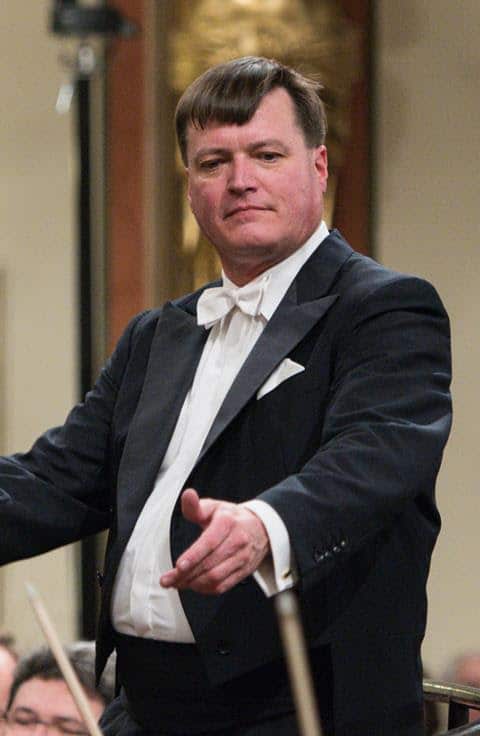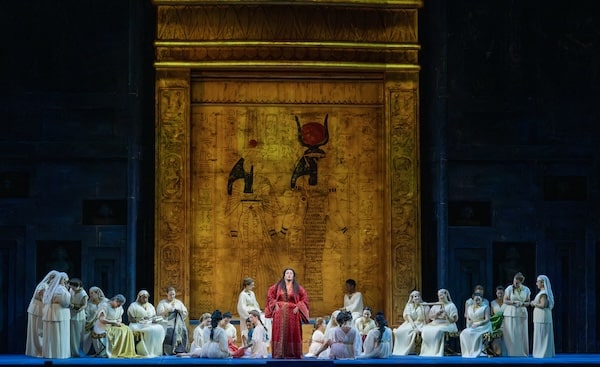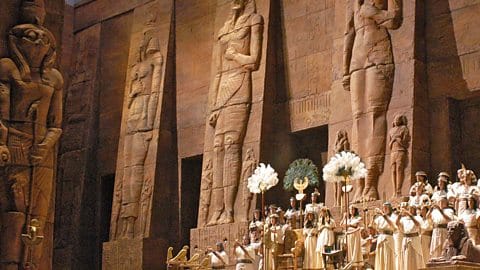Was this Beethoven’s big rebellion?
mainWelcome to the 117th work in the Slipped Disc/Idagio Beethoven Edition
String Quartet No. 13 in B flat major op. 130 (part 2)
See here for part 1.
Was Beethoven a rebel? Not in any formal sense. All life long he accepted Joseph Haydn’s rule that a symphony, a string quartet and a sonata should have four movements. Sometimes, he signed off with three, but the structure of sonata form was his guiding principle. Suddenly in the 13th quartet, he wrote six. For a man who never wasted any musical idea that he could flog to a publisher to ready cash, Beethoven must have reckoned he could get two full works out of this material, two full fees. Yet, despite having carved out the Grosse Fuge as a stand-alone work, it never apparently occurred to him to do so.
The B-flat major quartet, lasting between 40 and 50 minutes, bursts all established dimensions of classical form. Beethoven was out on his own, and he knew it. Luring us in with a sedate opening, he disrupts the flow of the first movement from adagio and allegro in the most disjointed fashion, ragged and reckless. Nobody knows where he is going. The admiring composer Louis Spohr dismissed this quartet, together with his next two works, as ‘indecipherable, uncorrected horrors’. A contemporary critic dubbed it ‘incomprehensible as Chinese’.
The second movement, Presto, lasts barely two minutes. The third is a ghostly dance, a faintly wierd anticipation of Ravel’s tribute to post-1918 Vienna. The fourth movement, a graceful waltz, speeds up without warning as if someone had upped an old record turntable from 33 to 45rpm. The Cavatina, as the fifth movement is known, comes from some deep inner place, with contradictory measure of consolation and yearning. Beethoven said that nothing he had written ‘had so moved him’. If it does not bring tears to your eyes, it’s not being played right.
The finale goes back on speed. Where on earth is he heading? Nowhere in Beethoven are we more in need of guidance. Nowhere is the choice of performer more critical to thelisterner’s resolution of this phenomenal work. From some 50-odd recordings, I’ll discuss a dozen of the most compelling.
The first thing to note is a clear divide between older recordings and modern, some of the newer ones being far more daring, taking us right to the edge. Among these, the Madrid-based Cuartetto Casals have been together for 20 years, reaching a level of trust that allows them to take the greatest risks with something approaching nonchalance. Brisk and muscular in the Presto movement, they deliver a Cavatina of such sweet tenderness that one can hear in each phrase why Beethoven was so moved by the unheard product of his own mind.
The Artemis Quartet, of similar experience, are slightly more athletic, bouncing almost audibly on the soles of their feet (they play, like many current string quartets, standing up). The performance is phenomenally clean, perhaps a little too sanitised. Personally, I like to hear the dirt under Beethoven’s fingernails.
No such caveats for the Takacs Quartet, who play both softer and louder than anyone else, testing the score to its limits. Nor indeed for the 20 year-old Quatuor Ébène, who toured the Beethoven quartets around the world from April 2019 to January 2020, and released the set on record in May of this year. Each of these groups is so remarkable in its own right that I am tempted to recommend that you should listen to one movement from each of them.

Stepping back one generation, the Alban Berg Quartet are exemplary both in their sense of tradition – no unnecessary risks taken and in their magisterial transmission of this quartet’s centrality to the evolution of music for the next hundred years. Sme may find their playing a shade conservative but there is nothing regressive about it: everything points to the challenges of the unheard future. Every Alban Berg performance is a masterclass in its own right; myself I find most to admire in their early recording of 1983.
Two American quartets come strongly into the reckoning – the Guarneris led by Arnold Steinhardt (1968) and the Emersons with Eugene Drucker (1997). The Guarneris are slightly Hollywood-sentimental in the Cavatina but breathtakingly imposing in the faster pasages. The Emersons always give the impression in a majo work that they have gone into purdah on a vegan diet for 18 months before they are ready to perform it. Their Cavatina has the luxurious sensation of brushed velvet, a softness barely obtainable from four contraptions of wood and gut, and the deep breath they take before commencing the finale feels precisely right.
Another generation back and the Quartetto Italiano (formed in Reggio Emiliano in 1945) bring a lyrical languour to Beethoven’s jagged lines, finding an ear-pleasing beauty where perhaps none was intended. Beethoven was the heart of this group’s work throughout the 35 years of its existence, and every Beethoven work they play is branded with their design. The Amadeus Quartet (conceived mid-War in a British internment camp) did not record the 13th quartet for DG until quite late in their existence, saving the best for last as it were. Performed in 1982, it is one of those interpretations that inspires instant confidence, wherever Beethoven might be leading us. Going back still further, the Busch Quartet in 1941 deliver irrefutable conviction in a session that was justly selected for EMI’s Great Recording of the Century series. Everything they did, from the angles of their seats to the suits they wore, was modelled on the original Joachim Quartet, two small steps down the line from Beethoven himself. My only reservation is their take on the Cavatina, which sounds almost lighthearted.
One word of warning: avoid the string orchestra version adopted by the Australian Chamber Orchestra. It diminishes the music.

pictured: Cuartetto Casals






The Cuarteto Casals is based in Barcelona, not Madrid.
Of the new quartets don’t forget the Quartetto di Cremona. A great, wonderful group playing together since 2002 if I remember well. The Quartet opus 130 (with the beautiful Allegro as finale, according to Beethoven’s final decision) and the Grosse Fuge are presented in different CDs for safety’s sake.
I like the safety measure.
And it’s not without reason: in Hannover in 2013, inTours in 2016 and in Dundee in 2017, CD players exploded when a disc was entered with the Grosse Fugue connected to the quartet.
And in 2019 three couples divorced in Valladolid after a dinner party, because of their difference of opinion as whether the fugue did or did not belong to the quartet.
There is more, but since the information comes from Russia it’s a bit less reliable.
Quartetto Italiano. Guarneri Quartet. Busch Quartet.
And the Hungarian Quartet of the early 1950s.
The Busch Quartet in the last iteration, 1951, recorded on tour in Germany, performed a magisterial Op. 130, with a cavatina that stretches to almost 8 minutes. After all, Beethoven’s directions were ‘adagio molto espressivo’ : https://www.pristineclassical.com/products/pacm105?_pos=4&_sid=a90659f59&_ss=r
Budapest (1933 recording), Busch, Italiano, Hagen (by far the best XXI century rendition).
Seriously, LaSalle?
The 13th and 14th quartets are like suites, a practice Shostakovich followed in some quartets.
Furtwaengler recorded the Cavatina with Berlin Philharmonic strings. It must be heard to be believed. He also recorded the Grosse Fuge with expanded strings and double-basses, as did Klemperer and Adolf Busch with the Busch Chamber Players. There is a four-hand piano transcription of the fugue.
Beethoven “cheerfully” acceded to the publisher’s request to write a brief alternative finale to the 13th quartet … it was his last completed work … but said his quartet one day would be played as he first wrote it, i.e. ending with the Grosse Fuge.
The Busch and Budapest Quartets, yes!
Takacs is quite an experience
The Grosse Fuge is problematic: too dense writing and music bursting from the limitations of the medium but in a way that hinders the free unfolding of the music. It is symphonic music. But the latter part with the light themes is suddenly string quartet style again, thus pointing back to what had come before. As a separate work, that reference does not work and the piece is unbalanced. As the finale of opus 130, the heavy, relentless fugue style does not relate to the rest of the quartet. So, it’s unsatisfactory both as a quartet finale and as a separate work, which is too bad because the thematic material and the spirit of the first three quarters opf the music, the serious bit, is tremendously grandiose. He should have turned the material into an orchestral work.
The finale which he wrote later-on, on the advice of his friends, fits much better to the quartet as a whole. The Amadeus recorded the version with the new, short finale and with the Grose Fugue as a bonus, as a separate work. The listener can skip the new finale and jump to the fuge if wished, so both versions are available. The work is paired with opus 135, an equally great work…. and the Amadeus play wonderfully beautiful (DGG 1982).
The very first recording of a string quartet I ever bought was this one performed by the La Salle Quartet. It was a challenge to come to terms with, but has possibly become my favouritest of all quartets.
Does anybody have any opinion on how La Salle rate?
lAlmost more a suite than a conventional quartet, a practice Shostakovich later adopted. Beethoven “cheerfully” acceded to a publisher’s request for a shorter finale that was his last completed work, but said one day his quartet would be played as he conceived it, with the Grosse Fuge.
Furtwaengler’s “Cavatina” with BPO strings must be heard to be believed. His recordings of the Grosse Fuge with expanded strings and double-basses stands with Klemperer’s and Adolf Busch’s with the Busch Chamber players, Buddapest and Busch Quartets, YES!, ffwith many others includingI hope that Borodin Quartet’s dearlier formation.
Tovey remarked on Beethoven’s almost insensate response to adversity in the indomitable Hammerklavier sonata’s fugue; no less to the Grosse Fuge, which with Bach’s chaconne for solo violin is an inexhaustible individual work of instrumental music.
I posted this before, but like some vaccinations it didn’t take. Happily this is a briefer reconstruction. David Nelson can relate.
I believe Ebene omit the ‘replacement’ last movement altogether in their recorded set.